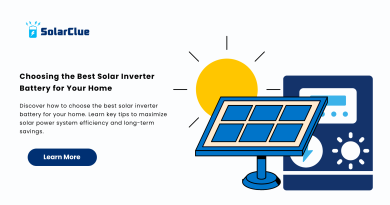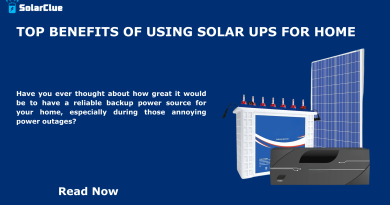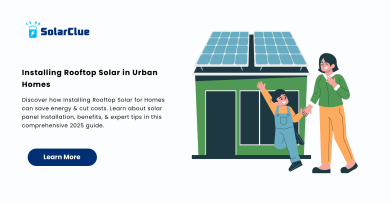How Big Is A Solar Panel In Meters?
Solar panel dimensions play a crucial role in the efficiency and installation of solar energy systems. This guide explores the standard sizes of residential and commercial solar panels, how panel size relates to wattage and efficiency, and the factors influencing solar panel layout and installation. We’ll also provide tips for maximizing solar panel output based on size and placement.
Table of Contents
- 1 Standard Solar Panel Dimensions and Sizes in Meters
- 1.1 The Relationship Between Panel Size and Wattage
- 1.2 Factors Affecting Solar Panel Layout and Design
- 1.3 Optimizing Solar Panel Placement for Maximum Efficiency
- 1.4 The Impact of Panel Size on System Aesthetics
- 1.5 Considerations for Different Roof Types and Orientations
- 1.6 The Future of Solar Panel Size and Design Trends
- 1.7 How Panel Size Affects System Cost and Installation Time
- 1.8 Calculating the Required Roof Space for a Solar Panel System
- 1.9 The Impact of Panel Size on Energy Production
- 1.10 FAQ Section
Standard Solar Panel Dimensions and Sizes in Meters
| Application | Typical Dimensions (meters) | Wattage Range | Cell Configuration |
|---|---|---|---|
| Residential | 1.6m x 1m | 250W – 400W | 60 cells (6×10) |
| Commercial | 2m x 1m | 400W – 600W | 72 cells (6×12) |
The Relationship Between Panel Size and Wattage
- Larger Panels: Typically offer higher wattage due to more solar cells, leading to more energy production.
- Smaller Panels: May have lower wattage but can be advantageous in constrained spaces or specific installations.
Factors Affecting Solar Panel Layout and Design
- Roof Space: The available roof space determines how many panels can be installed and how they should be arranged.
- Orientation: Panels should face south (in the northern hemisphere) to maximize sunlight exposure.
- Tilt Angle: The angle at which panels are installed affects their efficiency and should be adjusted based on geographic location.
Optimizing Solar Panel Placement for Maximum Efficiency
- Avoid Shading: Ensure panels are placed where they won’t be shaded by trees, buildings, or other obstructions.
- Use Microinverters or Power Optimizers: These devices can improve efficiency, especially in cases where some shading is unavoidable.
- Spacing: Proper spacing between panels can prevent shading and allow for optimal air circulation, reducing the risk of overheating.
The Impact of Panel Size on System Aesthetics
- Uniform Appearance: Panels with consistent sizes and colors provide a clean, uniform appearance on the roof.
- Custom Panel Sizes: Some manufacturers offer custom panel sizes for unique roof shapes, ensuring a seamless look.
Considerations for Different Roof Types and Orientations
- Flat Roofs: Panels may need to be mounted on angled racks to optimize sunlight exposure.
- Sloped Roofs: Panels should match the slope to maximize efficiency and aesthetic appeal.
- Roof Materials: Consider the weight of the panels and ensure the roof can support the system.
The Future of Solar Panel Size and Design Trends
- Thin-Film Panels: Flexible and lightweight, suitable for unconventional surfaces.
- Bifacial Panels: Capture sunlight from both sides, increasing energy production.
- Building-Integrated Photovoltaics (BIPV): Panels integrated into building materials, such as solar roof tiles, offer a seamless design.
How Panel Size Affects System Cost and Installation Time
- Larger Panels: Fewer panels needed, potentially reducing installation time and labor costs.
- Smaller Panels: May require more panels, increasing installation time but providing flexibility for complex roof designs.
Calculating the Required Roof Space for a Solar Panel System
To calculate the required roof space:
- Determine System Size: Calculate the total wattage needed.
- Panel Size and Wattage: Divide the total wattage by the wattage per panel to determine the number of panels.
- Panel Dimensions: Multiply the number of panels by the area of each panel to find the total roof space required.
The Impact of Panel Size on Energy Production
- Larger Panels: Generally produce more energy due to a higher number of cells.
- Optimized Placement: Correct placement and orientation maximize energy production regardless of panel size.
Here at SolarClue®, we offer a smart, practical, and “beautiful” solution. You will be answered for all the questions related to Solar.
We provide all kinds of brands that are the Best Solar panels in India.
If you are the one who is planning for the solar power system. Don’t hesitate to contact our team!
Looking forward to empowering you with solar energy, just like hundreds of our other clients!
FAQ Section
1. What are the standard dimensions of residential solar panels?
Residential solar panels typically measure 1.6m x 1m, with a wattage range of 250W to 400W.
2. How does panel size relate to wattage?
Larger panels generally have higher wattage because they contain more solar cells, leading to greater energy production.
3. What factors should I consider when designing a solar panel layout?
Consider roof space, orientation, tilt angle, and potential shading to optimize the layout for maximum efficiency.
4. Can the size of solar panels affect the aesthetics of my roof?
Yes, using panels of uniform size and color can create a clean, aesthetically pleasing appearance on your roof.
5. How do I calculate the required roof space for a solar panel system?
Determine your system size in watts, divide by the wattage per panel, and multiply by the panel dimensions to find the total roof space needed.



